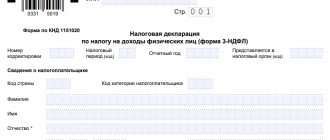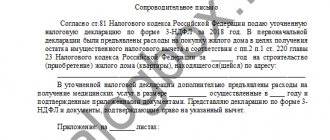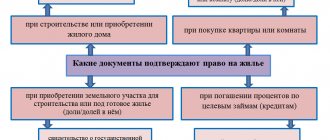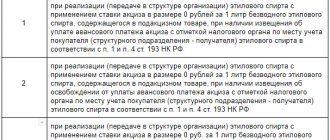Types of tax deductions for personal income tax
Let's figure out what exactly is a tax deduction.
The employee does not receive the full amount of wages accrued in the accounting department, but minus 13% of the total amount.
Example
Salary is 20,000 rubles. 13% of this amount - 2,600 rubles. The employee is due: 20,000 – 2,600 = 17,400 rubles.
The base for calculating personal income tax includes all types of income, including accruals for sick leave (Article 217 of the Tax Code of the Russian Federation), as well as vacation pay, bonuses, incentives, bonuses, thirteenth salary, etc. Income tax is not withheld only from social payments, such, for example, as maternity benefits or child care benefits up to 1.5 years. But there are ways to legally reduce the amount of tax withheld from a particular employee's paycheck through so-called deductions.
Note! From 2021, the employer pays for the first 3 days of illness. The remaining benefits are paid by the Social Insurance Fund within the framework of the “Direct Payments” project (Article 4, Part 4, Article 8 of the Law “On the Peculiarities of Calculating Benefits...” dated 04/01/2020 No. 104-FZ). The employer withholds personal income tax from his part; from other days the tax is withheld by the FSS of the Russian Federation.
Deductions are always strictly individual and do not apply to anyone and everyone. To receive a deduction, the employee must have grounds. And all deductions, even those that are indisputably due to the employee, are of a declarative nature. That is, they are not provided automatically, because the accountant is not obliged and cannot know about all the details of the life of each employee that give him the right to benefits. To receive some of them, it is enough to submit an application for deductions to the organization’s accounting department, supported by relevant documents. A number of deductions are given only after contacting the Federal Tax Service.
Types of deductions:
- Standard.
- Social.
- Property.
- Professional.
Standard tax deductions are provided to citizens in accordance with paragraph 1 of Art. 218 Tax Code of the Russian Federation. We only note that the benefits or deductions for personal income tax provided for in subsection. 1 and 2 paragraphs 1 art. 218 of the Tax Code of the Russian Federation, have no restrictions on the tax base. That is, they are provided in any case, regardless of the amount of income from the beginning of the year. If a taxpayer, by virtue of his status, is entitled to several standard deductions, then he is provided with the maximum possible.
ConsultantPlus experts told how to get deductions from your employer. Explore the Ready Solution with a free trial of the legal system.
Read more about the types of standard deductions and the features of their application here .
What is the tax base
The tax base characterizes the item subject to taxation in terms of quantity, value, physical properties or other characteristics. In other words, the tax base defines the units in which the object of taxation can be “measured.” the object of taxation is .
The item on which the tax is levied is called its object. It can be represented by various assets and financial amounts, for example:
- income, receipts, profit;
- cost of goods sold;
- payment received for services rendered or work performed;
- total income of an individual;
- own property owned by organizations and citizens;
- hereditary mass;
- vehicles, etc.
NOTE! Most often, the name of the tax reflects precisely its object: “income tax”, “land tax”, etc.
So, we conclude: the item on which tax must be paid is considered an object of taxation, and the tax base is its significant characteristic.
Standard deduction for children
Deductions for children listed in sub. 4 paragraphs 1 art. 218 of the Tax Code of the Russian Federation, have a limit for accrual. So, if the employee’s total salary since the beginning of the year has reached this limit, then deductions for children cease to be provided from the month it is reached, regardless of the age of the children, their number and whether they are relatives or not. The amount of income for applying the tax deduction for a child in 2020-2021 is equal to 350,000 rubles.
The standard child tax deduction is available to parents, the spouse of a parent, adoptive parents, guardians, trustees, foster parents, and the spouse of a foster parent.
The standard deduction for children is:
- 1,400 rub. - for the first or second child;
- 3,000 rub. - for the third and subsequent child.
The deduction for children is provided from the month of birth (adoption, establishment of guardianship, conclusion of an agreement on the transfer of a child to a family) until the end of the year in which he reaches 18 years of age. And if the child is a full-time student, graduate student, resident, intern, or student under the age of 24, then a deduction for children is provided for the month (inclusive) in which education ceased.
But the amount of deductions for disabled children is significantly higher and depends on the age of the child and the category of taxpayer. Thus, the tax deduction for a child in 2020-2021 is:
- 6,000 rubles if the deduction is received by guardians, trustees, adoptive parents, the spouse of an adoptive parent for a disabled child under 18 years of age or a child who is a full-time student (graduate student, resident, intern, student) under the age of 24 years, if he is a disabled person of the 1st or 2nd group;
- 12,000 rubles if the deduction is received by parents, the spouse of a parent, adoptive parents for a disabled child under 18 years of age or a child who is a full-time student (graduate student, resident, intern, student) under the age of 24 years, if he is disabled 1st or 2nd group.
If the disabled child is not the first child, then, according to the Presidium of the Supreme Court of the Russian Federation, the amount of the standard deduction in such a situation is determined as the sum of the deduction established for the disabled child and the deduction provided depending on the order of birth of the child (see paragraph. 14 Review of the practice of courts considering cases related to the application of Chapter 23 of the Tax Code of the Russian Federation, approved by the Presidium of the Supreme Court of the Russian Federation dated October 21, 2015, sent for information and use in work by letter of the Federal Tax Service of Russia dated November 3, 2015 No. SA-4-7 / [email protected] ).
The listed deductions for children can be provided in double amount to one of the parents (adoptive parents) of their choice, if the second parent (adoptive parent) refuses to receive it (subclause 4, clause 1, article 218 of the Tax Code of the Russian Federation). In addition, a double deduction for children is provided to the only parent (adoptive parent), adoptive parent, guardian, trustee (subclause 4, clause 1, article 218 of the Tax Code of the Russian Federation).
The right to receive a deduction for children is lost starting from the month the taxpayer’s income reaches its maximum level. In addition, the deduction for children ceases to be provided if the child got married before the end of the period during which, according to subsection. 4 paragraphs 1 art. 218 of the Tax Code of the Russian Federation, a deduction can be provided (letters of the Ministry of Finance of Russia dated March 29, 2019 No. 03-04-05/21857, dated March 31, 2014 No. 03-04-06/14217).
For the purposes of calculating personal income tax, deductions for children in 2020-2021 depend on the number of children in the family and the order of their birth. How to calculate their order for the purposes of determining the deduction for children is not discussed in the Tax Code of the Russian Federation, but the procedure for calculating the order for the purposes of applying the deduction for children has been repeatedly explained in its letters by the Ministry of Finance. According to officials, for purposes of determining the child deduction, it is necessary to take into account the total number of children of the taxpayer, including those who have reached the age when the deduction is no longer available (18 years or 24 years). When determining the amount of the deduction for children, the priority calculation also takes into account the non-adopted children of the spouse from another marriage, including children for whom the deduction for children is no longer given due to their reaching the age of 18, deceased children, ward children (see letters dated 03.07. .2019 No. 03-04-05/15085, dated 02/10/2012 No. 03-04-05/8-165, etc.).
If the parents have not registered a marriage, but at the same time have children from a previous marriage, then for the purposes of obtaining a deduction for children, each of the parents takes into account only their own children (letter of the Ministry of Finance of Russia dated March 20, 2012 No. 03-04-08/8-52, Federal Tax Service of Russia dated 04/05/2012 No. ED-4-3/ [email protected] ).
Most often, the employer provides a deduction for children to the employee. To receive a standard tax deduction for a child at your place of work, you need to write an application, attaching documents confirming your right to the deduction. It is enough to serve it once.
A new application to receive a deduction for children will be required if the employee’s basis for the deduction changes, for example, 1 more child is born (letters from the Ministry of Finance dated 05/08/2018 No. 03-04-05/30997, dated 08/08/2011 No. 03-04-05/ 1-551) or there will be a reorganization of the employer legal entity.
Read more here.
When an employee has the right to a deduction for children and has been working for the employer since the beginning of the year, the employer provides a deduction for children from the beginning of the year, regardless of the month in which the employee applied for it (letter of the Ministry of Finance of Russia dated April 18, 2012 No. 03-04 -06/8-118).
What amounts should not be taken into account when determining the income limit for the standard deduction? Find out the answer to this question in ConsultantPlus by receiving a free trial access to the K+ system.
Read about how the changes taking place with the employer affect labor relations with employees in the article “Art. 75 of the Labor Code of the Russian Federation: questions and answers" .
Elements that reduce the tax base
Naturally, for the taxpayer, from a financial point of view, it is more profitable for the tax base to be as small as possible, then a smaller amount of taxes will be paid from it. The law allows you to reduce the amount to be multiplied by the tax rate by the following economic values:
- tax deductions – it is allowed not to include categories of amounts specified by law in the taxable amount (these include standard deductions, pension, charitable, “children’s” and some others);
- tax benefits - financial advantages for certain categories established by the Government (lower tax amount, reduction of the tax rate, establishment of a minimum that is not subject to taxation, complete abolition of payment of a particular tax).
So, if we express the tax base as a formula, it will look like this:
NB = SD – V – L
Where:
- NB – tax base;
- B – tax deductions provided for by law and applicable to a given taxpayer;
- L – tax benefits valid for a given tax and category of payers.
Social deductions, their size and who can receive them
Social tax deductions are provided to an employee if in the reporting year he made the following types of payments:
- paid for his or his children’s studies;
- paid for treatment - his own, his children's or his parents';
- made contributions to the funded part of the pension voluntarily in addition to the amounts accrued by the employer;
- paid for a voluntary health insurance policy.
The amount of such deductions is limited by law. That is, if studying was very expensive, this does not mean that it will be possible not to pay tax at all.
A deduction for studies, if the taxpayer paid for his personal studies, is provided in an amount not exceeding 120,000 rubles.
In this case, the educational institution must necessarily have state accreditation. For a taxpayer who paid for his own education, the form of education is not important; he will receive a deduction, even if he studied in absentia. If the taxpayer wants to receive a deduction for the costs of educating children, then the form of education must be full-time only.
An educational deduction for one child can be provided for no more than 50,000 rubles.
That is, a taxpayer can return a tax in the amount of 50,000 × 13% = 6,500 rubles by deducting one child’s tuition fees, while from paying for their own education - 120,000 × 13% = 15,600 rubles.
You can receive a deduction for training expenses from your employer before the end of the year in which such expenses were incurred. To do this, you must submit an application to the tax office, supported by all the necessary documents:
- an agreement with an educational institution;
- payment receipts;
- a copy of the educational institution's license to provide educational services.
The Federal Tax Service, having examined these documents, will issue a notice of the right to deduction. The notice will need to be given to the employer.
But you can also receive such a deduction from the Federal Tax Service by submitting there, at the end of the year in which the expenses occurred, all the above documents and the 3-NDFL declaration for the past year.
The deduction cannot be used if payment for studies was made from maternity capital.
A taxpayer can receive social payments for treatment if the expenses were incurred in relation to himself, his spouse, parents or children under 18 years of age. The list of services for which expenses can be reimbursed is contained in Decree of the Government of the Russian Federation dated March 19, 2001 No. 201. The medical institution that provided assistance must necessarily have a license to provide the appropriate type of assistance.
In case of payment for expensive treatment, the deduction is provided without restrictions, but the type of treatment must be included in the list approved by the Government.
Just like for training expenses, a deduction for treatment can be provided either by the tax office at the end of the year, or in the current year by the employer, subject to a notification issued by the Federal Tax Service.
Social deductions for pensions are provided in the amount of voluntary contributions made by the taxpayer to form his pension, the pension of his spouse, and children. It can be obtained from the employer by submitting a corresponding application to him, provided that this employer itself calculates and transfers such contributions.
Limits of property tax deductions
The right to receive a property tax deduction arises for a taxpayer who, in the past year:
- Purchased a house or apartment (part of a house or share in an apartment).
- Made expenses for the purchase of construction or finishing materials. In this case, the purchase and sale agreement must contain a clause stating that the house or apartment is purchased unfinished or without finishing.
- Incurred expenses for the preparation of design estimates for the construction of the house.
Obtaining a tax deduction for the purchase of a land plot is possible only if the plot was purchased together with a house. Otherwise, it is possible to reimburse part of the costs after building a house and obtaining a certificate of ownership of the house, and only when the site is intended for individual construction (subclause 3, clause 1, article 220 of the Tax Code of the Russian Federation).
The limit for receiving a property deduction is the amount of 2 million rubles. It does not include interest on mortgage loans obtained from Russian banks, for which their own limit is set - 3 million rubles.
You can receive a property deduction, like a social one, from your employer this year upon notification issued by the Federal Tax Service, or directly from the Federal Tax Service at the end of the year (or several years).
If the taxpayer claims both property and social deductions, the procedure for their provision is determined by the employer. The Federal Tax Service recommends that employers be advised in what order it is best to take tax deductions.
If you intend to receive a deduction from the Federal Tax Service, you will need to submit a 3-NDFL declaration for the past year.
Starting from 01/01/2014, for legal relations that arose after this date, parents can receive a deduction, including for property owned in whole or in part by a minor.
An example of filling out page 3 of the 3-NDFL declaration
Let's consider the formation of pages with calculation 2 using the following example:
Sidorov P.I. works at Zvezda LLC on a permanent basis and at Polet LLC on a part-time basis. In 2021, Sidorov purchased an apartment for 6,000,000 rubles. In 2020, Sidorov sold this apartment for family reasons for 6,300,000 rubles. Sidorov has documents for both transactions. At the end of 2021, Sidorov must calculate and pay personal income tax on the sale of an apartment and report this to the tax office. Together with Sidorov, we are drawing up a 3-NDFL declaration.
1. We determine the sources of income in the Russian Federation: these are Sidorov’s employers (Zvezda LLC and Polet LLC) and the buyer of the apartment. The buyer is an individual resident of the Russian Federation. This means that Sidorov had 3 sources of income in 2021. At the same time, all deductions related to income from both places of work have been made and personal income tax has been paid to the budget. Therefore, according to the conditions of the example, Sidorov can refuse to fill out 3 sheets of the 3-NDFL declaration and create only one Appendix 1, in which he will indicate his income from the sale of the apartment.
2. In addition to the amount received from the sale, Sidorov for this transaction has the right to deduct expenses associated with the transaction. In particular, to reduce the amount of income from the sale by the amount of expenses for the purchase of real estate (documented). Therefore, Sidorov fills out a separate Appendix 6, intended to indicate data on deductible expenses when selling property. In Appendix 6, in the corresponding lines, Sidorov indicated the amount of expenses for the purchase of the sold apartment in the amount of 6,000,000 rubles. 6,300,000 – 6,000,000 = 300,000 is Sidorov’s taxable income under the transaction. And it is precisely 300,000 that Sidorov indicates in line 060 of section 2 of his declaration.
3. Now Sidorov has the initial information that he must combine on page 3 of his declaration:
- the amount of income from the declared transaction - from page 070 of Appendix 1 in accordance with the breakdown of the lines in the sheet by type of income;
- the amount of deductions used is from page 020 of Appendix 6;
- the size of the tax base - the difference between the amounts of income taken into account in the calculation and the amounts of deductions;
- the amount of tax calculated at the specified tax rate for a given tax base.
4. In addition to the above applications, Sidorov must fill out the calculation to Appendix 1. Here you must indicate:
- cadastral value of the apartment as of January 1, 2021 (line 020);
- the actual cost specified in the apartment purchase and sale agreement (line 030);
- estimated cost taking into account the coefficient, for this purpose the indicator is p. 020 * coefficient 0.7 (p. 040);
- the amount of income accepted for taxation. The largest of the values is indicated: p.030 or 040 (p.050).
This calculation allows you to see whether the taxpayer is underestimating his taxable income. Let us remind you that the price of the property being sold cannot be lower than 70% of the value established by the cadastre. If the contract price is lower, then the cadastral value reduced by a factor of 0.7 is accepted for taxation.
How to find out the cadastral value of real estate, read here.
Sidorov will transfer the result of his calculations on page 3 of the declaration to page 2, on which the tax authorities will see the amount of personal income tax to be paid to the budget by Sidorov for 2021, the KBK where he must pay, and OKTMO.
The following articles will help you understand the codes for section 1:
- “What OKTMO code should I indicate in the 3-NDFL declaration?”;
- “What is the code for the type of income in the 3-NDFL declaration”.
Thus, on page 3 of the 3-NDFL declaration, the information reflected in subsequent sheets and affecting the amount of tax payable (or refund) is usually summarized.
How to fill out the 3-NDFL declaration when selling real estate (apartment)? Find out the answer to this question in ConsultantPlus. To do everything correctly, get trial access to the system and go to the Ready solution. It's free.
Professional tax deductions
Professional deductions are provided for in Art. 221 of the Tax Code of the Russian Federation for individual entrepreneurs and private practitioners (lawyers who have established law offices, notaries, etc.), persons working under GPC agreements, and persons receiving royalties.
These taxpayers can receive a deduction for the amount of expenses that can be documented. In this case, the expenses must be incurred as part of profit-making activities. If there are no documents confirming expenses, then the maximum you can receive is a deduction in an amount not exceeding their established share of the declared income. The share depends on the type of income.
For individual entrepreneurs and private practitioners, the deduction is provided only through the Federal Tax Service, and persons working under GPC agreements or receiving royalties have the right to take advantage of such a deduction from the tax agent who pays them the remuneration.
Read more about these types of deductions here .
Results
The amount of personal income tax withheld from an individual’s income can be reduced by applying deductions to income, divided into standard, social, property and professional. Each type of deduction is characterized by its own application features. The size of almost all of them is limited. The amount of restrictions depends on the type of deduction.
Providing deductions is possible both at the place of work and through the Federal Tax Service. In the first case, confirmation of the right to deduction issued by the tax authority will be required. Such a document is not needed only for standard deductions.
Sources:
- Tax Code of the Russian Federation
- Decree of the Government of the Russian Federation of March 19, 2001 N 201
You can find more complete information on the topic in ConsultantPlus. Free trial access to the system for 2 days.









